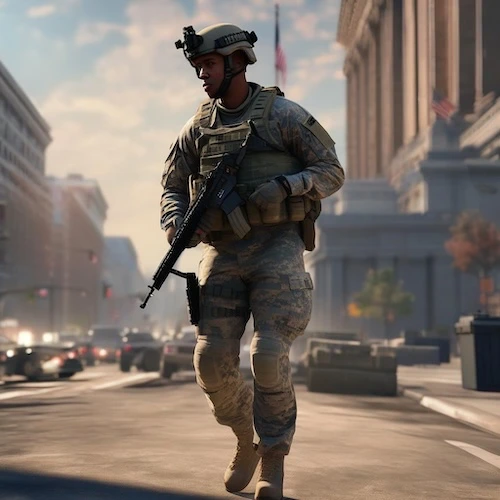Article 120 UCMJ – Sexual Assault Defense (2025 Guide)
Gonzalez & Waddington, Attorneys at Law defend service members worldwide facing Article 120 sexual assault charges under the UCMJ. These cases are high stakes: confinement, a punitive discharge, career loss, and sex-offender registration are on the line. This guide explains the law, the real-world tactics used by investigators and prosecutors, and the defense strategies that protect freedom, rank, and future.
Branches served: Army, Navy, Air Force, Marine Corps, Coast Guard, and Space Force.
Table of Contents
- What’s at Stake
- Core Elements & Consent
- Winning Defense Themes
- Evidence That Moves the Needle
- CID/NCIS/OSI Tactics & Pretext Calls
- Article 32 Hearings (2025 Reality)
- Motion Practice That Changes Trials
- At Trial: Cross-Examination Priorities
- Separation Boards/BOIs After or Instead of Trial
- Sentencing & Collateral Consequences
- Pro Tips
- Common Mistakes
- Featured Video
- FAQs
- Call to Action
What’s at Stake
- Confinement & punitive discharge: Serious sentences and the loss of benefits and retirement.
- Sex offender registration: Possible long-term registration depending on jurisdiction and offense.
- Career impact: Flags, loss of clearance eligibility (if applicable), removal from leadership roles, and adverse evaluations.
- Parallel actions: Even with weak evidence, commands may pursue administrative separation boards/BOIs on a lower standard of proof.
Bottom line: Treat day one like trial day. Early strategy wins cases.

Core Elements & Consent
What the Government Tries to Prove
Under Article 120, UCMJ, offenses range from sexual assault to abusive sexual contact to rape, typically requiring proof of a “sexual act” or “sexual contact” by force, threat, causing bodily harm, or when the complainant is asleep, unconscious, or otherwise unable to consent.
Consent & Mistake of Fact
- Consent means a freely given agreement by a competent person.
- Mistake of fact as to consent can be a defense if the belief was honest and reasonable under the circumstances.
- Impairment: Alcohol or drugs can affect capacity; the issue is functional ability to understand and agree—nuanced, fact-specific, and often contested.
Winning Defense Themes
- Consent narrative grounded in reality: Texts, DMs, witness accounts, and timeline context of flirtation, planning, or affectionate behavior.
- Credibility & reliability: Prior inconsistent statements, memory drift, suggestive interviewing, and influence from peers or command.
- Motive to fabricate or exaggerate: Relationship fallout, jealousy, reputation concerns, administrative leverage, or attention-seeking dynamics.
- Behavioral evidence: Post-event communications, social media, training attendance, PT performance, or travel that contradicts claimed incapacity.
- Forensic skepticism: SANE reports, timing of exams, DNA transfer mechanics, and benign explanations for mixed profiles or low-template DNA.
- Digital truth-finding: Geolocation, app metadata, photo EXIF, ride-share logs, and phone usage patterns that support consent or impeach timelines.
Evidence That Moves the Needle
- Full digital extractions (not cherry-picked screenshots): messages, call logs, location history, and cloud backups.
- Medical/SANE materials: Exam notes, lab worksheets, injury timing, and alternate causes for findings (sports, consensual activity, prior injuries).
- Witness & environment: Room layout, visibility, noise, door locks, number of people nearby, and opportunities to leave or speak.
- Timeline board: A minute-by-minute reconstruction from first contact to the report—texts, cameras, receipts, duty rosters.
- Comparator evidence: Similar conduct treated as consensual by the complainant in other contexts (handled via motions and careful evidentiary rules).
CID/NCIS/OSI Tactics & Pretext Calls
- Pretext communications: Recorded calls or messages designed to elicit apologetic or incriminating statements; context and phrasing matter.
- Open-ended interviews: “Just tell us your side” is a trap. Use your Article 31(b) rights. Request counsel. Stop talking.
- Device searches: Do not consent to broad phone/computer searches. Demand a warrant/authorization and narrow scope.
- Polygraphs: Often fishing expeditions. Results are generally inadmissible but admissions are not. Speak to counsel first.
Article 32 Hearings (2025 Reality)
The Article 32 preliminary hearing is not the old dress rehearsal for trial. It’s narrower, but still valuable if used strategically.
- Goals: Lock in testimony, preview government theory, pressure discovery, and highlight weaknesses for referral decisions.
- Requests: Targeted witness production, limited cross to preserve impeachment, and exhibits that set up key trial motions.
- Mindset: Precision beats theatrics. Protect the record. Don’t give the government free practice on your defense.
Motion Practice That Changes Trials
- MRE 412 (rape-shield): Seek tailored exceptions when alternative explanations for injuries, DNA, or motive are at stake.
- MRE 404(b): Fight improper “pattern” propensity; seek limiting instructions and exclude prejudicial character narratives.
- MRE 513 (mental health): When credibility or symptom explanations are central, pursue in camera review consistent with law.
- MRE 608/609: Prior untruthful acts and convictions can matter; handle with precision to avoid backfire.
- Suppression motions: Unlawful searches, coerced statements, overbroad device warrants/authorizations.
- Discovery enforcement (RCM 701): Force production of raw digital data, lab notes, interview recordings, and investigator communications.
At Trial: Cross-Examination Priorities
- Specificity & sequence: Pin down exact words, times, and actions—then reveal contradictions step by step.
- Influence map: Who the complainant spoke to and when (friends, advocacy, command). Track how the story evolved.
- Digital anchors: Confront with timestamps, message cadence, and phone usage patterns inconsistent with claimed blackout or fear.
- Forensic humility: Expose limits, contamination risks, and alternative explanations without overclaiming.
- State-of-mind windows: Polite but firm exploration of behavior before/after that aligns with consent and agency.
Separation Boards/BOIs After or Instead of Trial
Commands frequently pursue administrative separation boards (enlisted) or Boards of Inquiry (BOI) (officers) based on the same allegations, even when courts-martial are not preferred or end in an acquittal. The standard is lower—preponderance of the evidence—so treat boards like trials.
- Board playbook: Attack the foundation (credibility, timelines, selective enforcement) and build a retention case with evaluations, awards, deployment value, and character witnesses.
- Outcome focus: Strive for no misconduct findings or retention. If separation is likely, fight for the best characterization possible.
Sentencing & Collateral Consequences
- Mitigation stack: Service record, combat deployments, leadership impact statements, rehabilitation steps, and expert testimony on risk and treatment.
- Collateral fallout: Registration, employment barriers, housing, professional licensing, and travel restrictions (jurisdiction-dependent).
- Administrative echoes: Even after trial, expect boards, GOMORs/LORs, flags, and adverse evaluation entries.
Note: Penalties and registration rules vary by offense and jurisdiction. Get individualized advice.
Pro Tips
- Exercise rights early: Invoke Article 31(b), ask for counsel, and stop the interview.
- Lock down devices: Do not consent to broad searches; preserve your own data; keep cloud backups intact.
- Capture the timeline: Save messages, receipts, travel logs, badge swipes, and app data immediately.
- Control third-party statements: Don’t discuss facts with peers or on social media.
- Treat boards like trials: Build evidence and witnesses early in case of a later BOI or separation board.
Common Mistakes
- “Explaining it away” to agents without counsel present.
- Deleting messages or apps (looks like consciousness of guilt and can be recovered).
- Relying on screenshots instead of full forensic extractions.
- Ignoring SANE/forensic details that actually support the defense narrative.
- Underestimating the impact of administrative actions following trial.
Video: Defending Article 120 – Consent, Credibility & Digital Evidence
FAQs: Article 120 UCMJ
Should I talk to CID/NCIS/OSI to clear this up?
No. Invoke your Article 31(b) rights, request counsel, and avoid statements without legal advice.
Can consent still exist if alcohol was involved?
Yes, depending on capacity and facts. The key is functional ability to understand and agree; it’s highly fact-specific.
What if I honestly believed there was consent?
Mistake of fact can be a defense if your belief was honest and reasonable under the circumstances.
Are SANE exams and DNA conclusive?
No. Timing, transfer, and alternative explanations matter. Many findings are non-specific and require expert context.
What is an Article 32 hearing and does it help?
It’s a preliminary hearing with a narrower scope than in the past. Used correctly, it locks in testimony and pressures discovery.
Could I face separation even without a conviction?
Yes. Commands may pursue a separation board/BOI on a lower standard of proof. Prepare early.
Will I have to register as a sex offender?
Registration depends on the offense and jurisdiction. Your defense counsel will advise based on your specific charges and location.
Accused Under Article 120? Fight Back Now.
Gonzalez & Waddington builds evidence-driven defenses focused on consent, credibility, and forensic reality. We defend service members worldwide at courts-martial and separation boards/BOIs.
Call: 1-800-921-8607 | Web: ucmjdefense.com
Nothing here is legal advice. Every case is unique. Speak directly with a defense lawyer before making decisions.



